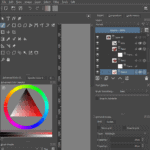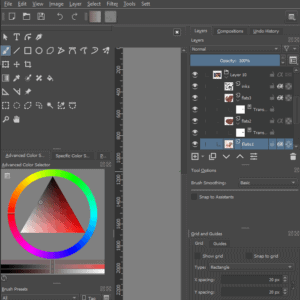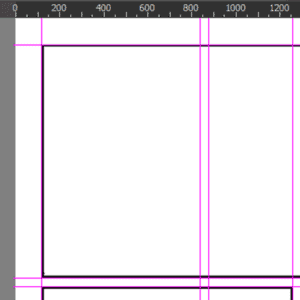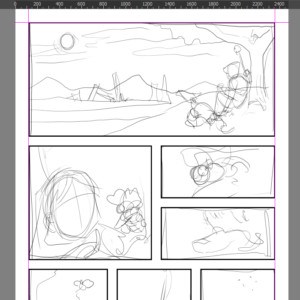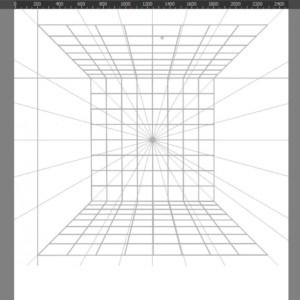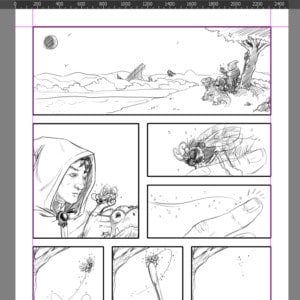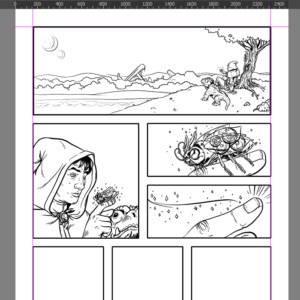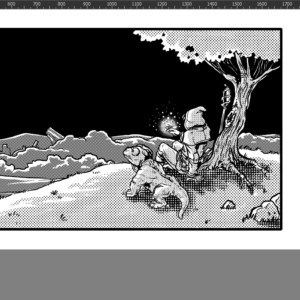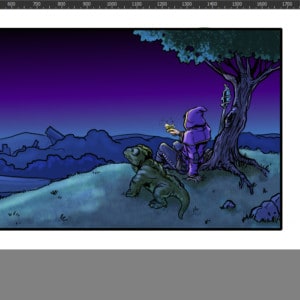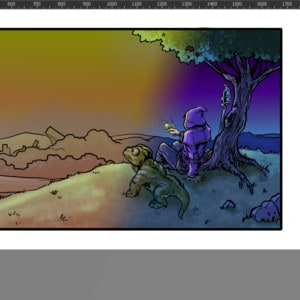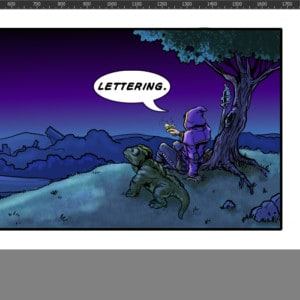In this series, instructor Ian MacLean will be guiding you through Krita to make a comic. Learn about all the basics and even some more advanced stuff in Krita, and create a comic of your own!
Krita for Comics Ep. 1: Krita Basics
We will go through Krita’s basic interface, image settings, dockers, and tool types, to get you familiar with the software.
Krita for Comics Ep. 2: Page Setup
In this video we will focus on setting up a comic page in Krita using an A4 template. Grids, guides, and snapping will be used to define margins and gutters, and selections and layering will help define panel layout.
Krita for Comics Ep. 3: Clipping Groups & Alpha
Clipping groups and masking are means of restricting edits and effects to specific areas or elements of the page. We will learn how they work and how to combine them with alpha transparency to speed up your work and keep your page looking professional.
Krita for Comics Ep. 4: Perspective Tools
Krita features a host of tools, called assistants, that can help with a variety of technical drawing aspects. We’ll take a look at the types of assistants available and learn how to use them in conjunction with other tools to make technical and perspective drawing a snap.
Krita for Comics Ep. 5: Pencilling
Using Krita’s wide variety of brush presets, pencilling in the program is a breeze. There are a few layers and grouping practices that can improve your drawing and make things easier down the line.
Krita for Comics Ep. 6: Inking
Inking is the unsung hero of comics, responsible for bold, characterful lines that are distinctive of the media. Using a variety of brush presets that emulate real-world inking tools, we’ll be working on pumping up our pencils. Brush stabilization can also lend a helping hand with smoother strokes.
Krita for Comics Ep. 7: Tones
Black and white comics are a valid stylistic choice when presenting your work. The vast majority of manga is still produced in black and white, even without the colour restrictions of the past. Adding tones can be done quickly and easily in Krita, to give your linework depth and a sense of lighting.
Krita for Comics Ep. 8: Colour
Make your pages pop with the application of colour. Establish lighting, weather, or mood with careful selection of colours to complement your lineart. Krita makes colouring easier with layering, layer styles, and clipping groups, all of which we’ll explore here.
Krita for Comics Ep. 9: Adjustment Layers
We’ll take another look at colour and see how we can change the feel of a panel by playing with adjustment layers. In addition, we’ll look at an alternative method for adding light and shadow to a panel by using an adjustment layer.
Krita for Comics Ep. 10: Lettering
Words are generally the other half of the comics recipe. In this video, we’ll explore my methods for adding text and balloons to your page in Krita, and how to use clipping groups to contain those elements to the panels.
